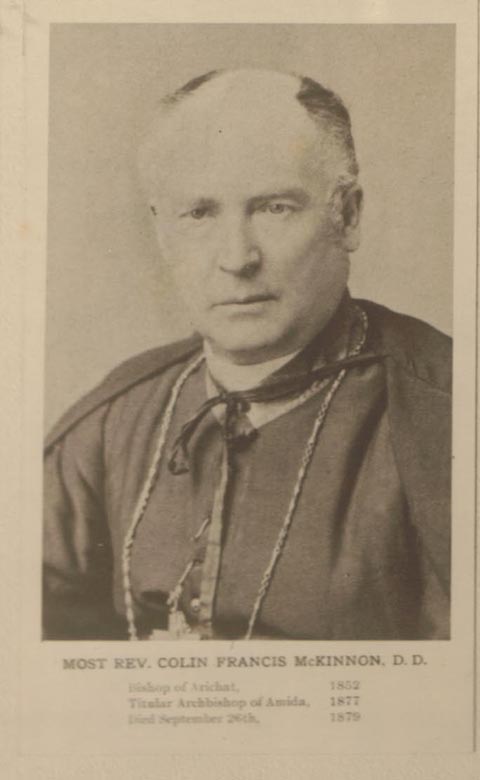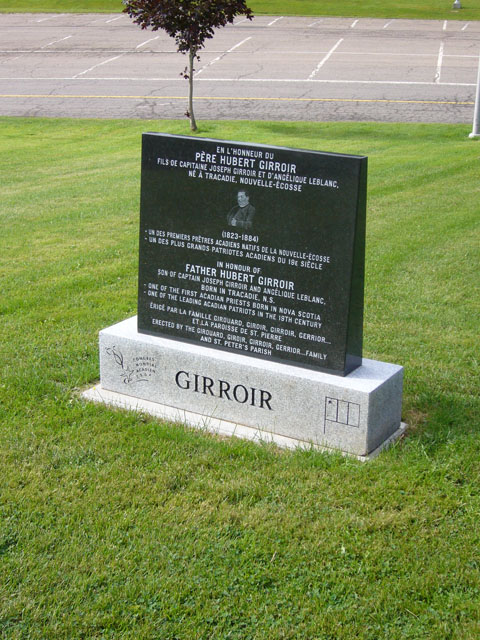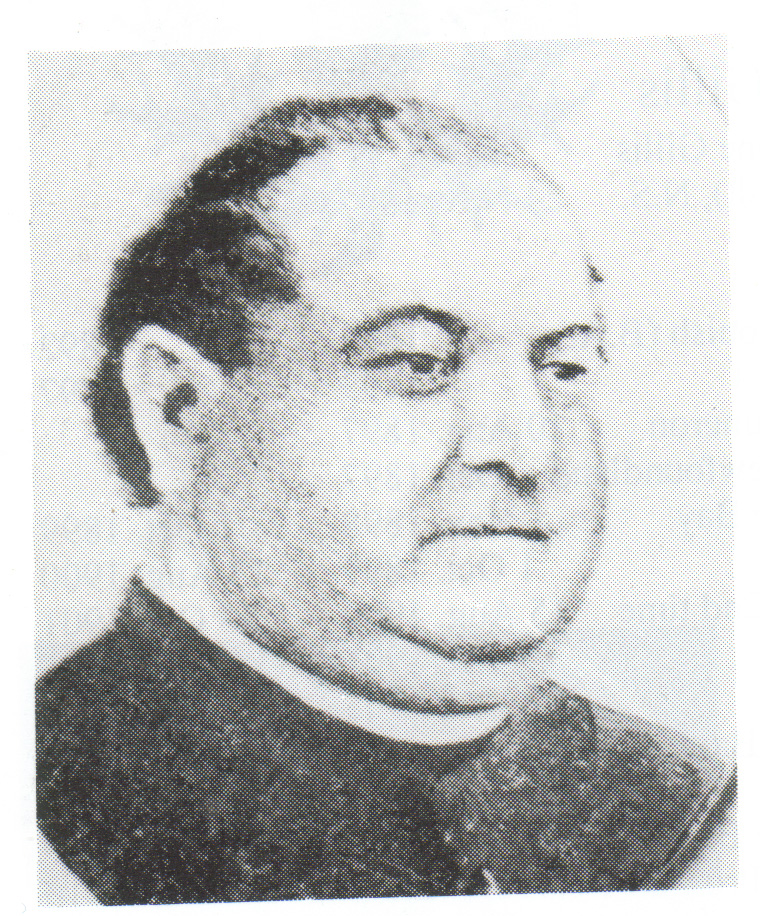|
Brief History:
One of the best known Scottish poets to come to Nova Scotia was
John MacLean. He was born at Coolas, Isle of Tiree, Argyllshre on
January 8th 1787. John was the son of Allan and Margaret MacLean.
As he entered adulthood he decided that he would serve as a journeyman
in the shoemaker business. He later on went on to marry Isabella
Black in 1808. Two years later John was drafted into the British
militia. After only serving a few months he decided that he wasn’t
meant to serve in the army and returned to his home to continue his
life as a shoemaker and writing verses. In the year 1818 John published
his first book of poetry and songs however it didn’t turn out
to be very popular. MacLean decided that his life could improve vastly
if he moved to the Americas. Therefore in August 1819 John and his
family moved to Pictou. After only being in Pictou for a week or
two the family settled in a little home in Barney’s River.
The lifestyle was different for John and caused him to become quite
lonely. This loneliness resulted in the poem A’ Choille Ghruamach
(The Gloomy Forest). In 1831 the MacLean family packed up again and
moved to Glenbard. Bard later on went on to write a poem entitled
Am Bal Gaidhealach (The Gaelic Ball). He wrote this poem in order
to counteract the impression giving off by The Gloomy Forest. While
living in Glenbard he mainly focused on writing in Gaelic rather
than any physical work that use to use up his precious time. Sadly
though in January of 1848 he suffered a stroke while visiting neighbors
and immediately passed away. His remains were place in a small cemetery
at Glenbard, where a monument now stands as a silent remembrance.
Inscription:
“In memory of Bard MacLean, one of the most famous Gaelic
poets
who ever lived in this land. He was born in the island of Tiree,
Scotland,
and came with his family to this country in the year 1819. He settles
near this location”
Bishop Colin Francis MacKinnon was born on July
20, 1810, in William’s Point, Antigonish County. His parents were
John MacKinnon and Una MacLeod. He attended Urban College in Rome
from 1829 to 1837. He was ordained in Rome on June 4, 1837. He was
the pastor at St. Andrews, and later became Bishop of Arichat.
Bishop MacKinnon promoted education. He wanted to establish a
seminary because of a need for Catholic priests. The seminary was
started in Arichat, and moved to Antigonish two years later. That
seminary grew to become St. Francis Xavier University. Bishop
MacKinnon is also responsible for the building of St. Ninian’s
Cathedral. Building started in 1867 and was completed in 1874.
Bishop MacKinnon died on September 26, 1879, and was interred in the
vault of St. Ninian’s Cathedral.
Inscription
In
Memory of
Archbishop Colin F. MacKinnon
2nd
Bishop of Antigonish
Founder
of
St.
Francis Xavier University 1853
Builder
of
St.
Ninian’s Cathedral 1874
Born
William’s Point 1810
Died
Antigonish 1879
Sources
“For The People- A History of St. Francis Xavier
University” ~ James D. Cameron
“A History of the Catholic Church in Eastern Nova
Scotia” ~ A.A. Johnston
“Antigonish Diocese Priests and Bishops
1786-1925” ~ Rev. A.A. Johnston, Litt. D.

This
excerpt (source unknown) depicts the ecclesiastical assignments of
Rev. Colin Francis McKinnon.
The Father Hubert Girroir Monument stands at the
front of St. Peter’s Parish Church in Tracadie. The other side of the
monument is the Senator Edward Lavin Girroir Monument. It was erected
on August 6, 2004 by the Girouard, Giroir, Girroir, and Gerroir
families.
Father Hubert Girroir was born in Tracadie on
July 18, 1825. His parents, Joseph Girroir and Angelique LeBlanc,
were among the first Acadian families in Tracadie. Father Girroir
attended St. Mary’s College in Halifax, from 1841 to 1842. He later
attended the Grand Seminary of Quebec from 1850 to 1853. He was
ordained on February 19, 1853, in Quebec. He was an avid skater, even
winning a race against a champion skater, while in Quebec. Father
Gerrior taught French and Christian doctrine at St. Francis Xavier
College. Until 1860, he was the only Acadian priest in the diocese.
He is well known for promoting education and French language &
culture, as he was involved in bringing the French-speaking Christian
Brothers to Arichat, and supported the Sisters of Notre-Dame. He was
pastor at Arichat from 1863 to 1867. He was also pastor at Cheticamp
from 1868 to 1875 and Havre Boucher from 1875 to 1883. He died on
January 25, 1884, in Havre Boucher.

Inscription:
En L’honneur du
Pere Hubert Girroir
Fils de capitaine Joseph Girroir et d’Angelique LeBlanc
Ne a Tracadie, Nouvelle-Ecosse
(1823-1884)
Un des premiers pretres Acadiens natifs de la Nouvelle-Ecosse
Un des plus grands patrioles Acadiens du 19E siecle
In honour of
Father Hubert Girroir
Son of Captain Joseph Girroir and Angelique LeBlanc
Born in Tracadie, Nova Scotia
One of the first Acadian priests born in Nova Scotia
One of the leading Acadian patriots in the 19th century
Erige par la famille Girouard, Giroir, Girroir, Gerroir
Et la paroisse de St. Pierre
Erected by the Girouard, Giroir, Girroir, Gerroir families
And St. Peter’s Parish

Sources
Dictionary of Canadian
Biography XI 1881-1890
Acadian Awakenings ~
William D. Gerroir
Antigonish Diocese
Priests and Bishops 1786-1925 ~ Rev. A.A. Johnston
The monument at the Keppoch cemetery stands to
commemorate the Immaculate Conception Church which once stood
there. The foundation of the church is still on the site. The
monument was donated by Reverend A. Kennedy MacLean in 1964.
Keppoch was settled in about 1820. It grew to
become a community with sixty four families, a store, a school, two
post offices, a church, and a cemetery. Work on the Immaculate
Conception Church began in the spring of 1861, and it was originally
blessed on October 13th, 1861 by Bishop Colin Francis
MacKinnon. The church was destroyed in 1916 by a storm. By the
1930s the school had closed and the last of the community’s
remaining families had moved down from the mountain.
Inscription
In memory of Celtic Pioneers who
built St. Bean’s Church here about 1838
and Immaculate Conception Church in
1861. The high alter of the latter stood on
this site.
Sources
Correspondence
between Rev. D J Rankin and R.D. MacDonald.
“From The Keppoch…To
The End” ~ J.F. MacLean
Survey Plan:
Crown Land
Cross Roads Ohio (Morvan)
Field Plot P-233/87.
Department of Lands and Forests Survey 1987.
Pioneer Kirk Monument »
The Pioneer Kirk Monument was a project of
the Kings United Church at Loch Katrine and the Lochaber United
Church. It was dedicated on August 19, 2000. The monument was
unveiled by Rose Sutherland Carter and Isabel Sutherland Stephens.
Between 1800 and 1869, Gaelic speaking
Presbyterians emigrated from Scotland and settled in St. Mary’s, South
River, Goshen, Polson’s Lake, and Middletown. In about 1822,
approximately thirty families living in Middletown were granted
permission from the Lieut. Governor of Nova Scotia to build a church.
The first log church was built in 1837, with service by Rev. Donald
MacConnachie. The church was located where the four roads from
Middleton, Loch Katrine, Lochaber, and Pinevale met. The Kirk served
from 1837 to 1869.

Inscription
At this location
stood the
Log Presbyterian
“Kirk”
which served the first
settlers of this area
circa 1823-1869
“I was glad when He said
unto me, let us go into
the house of the Lord.”
Sources
“Ripples From Copper
Lake” ~ Rose Sutherland Carter.
[Previous
Page]
|

